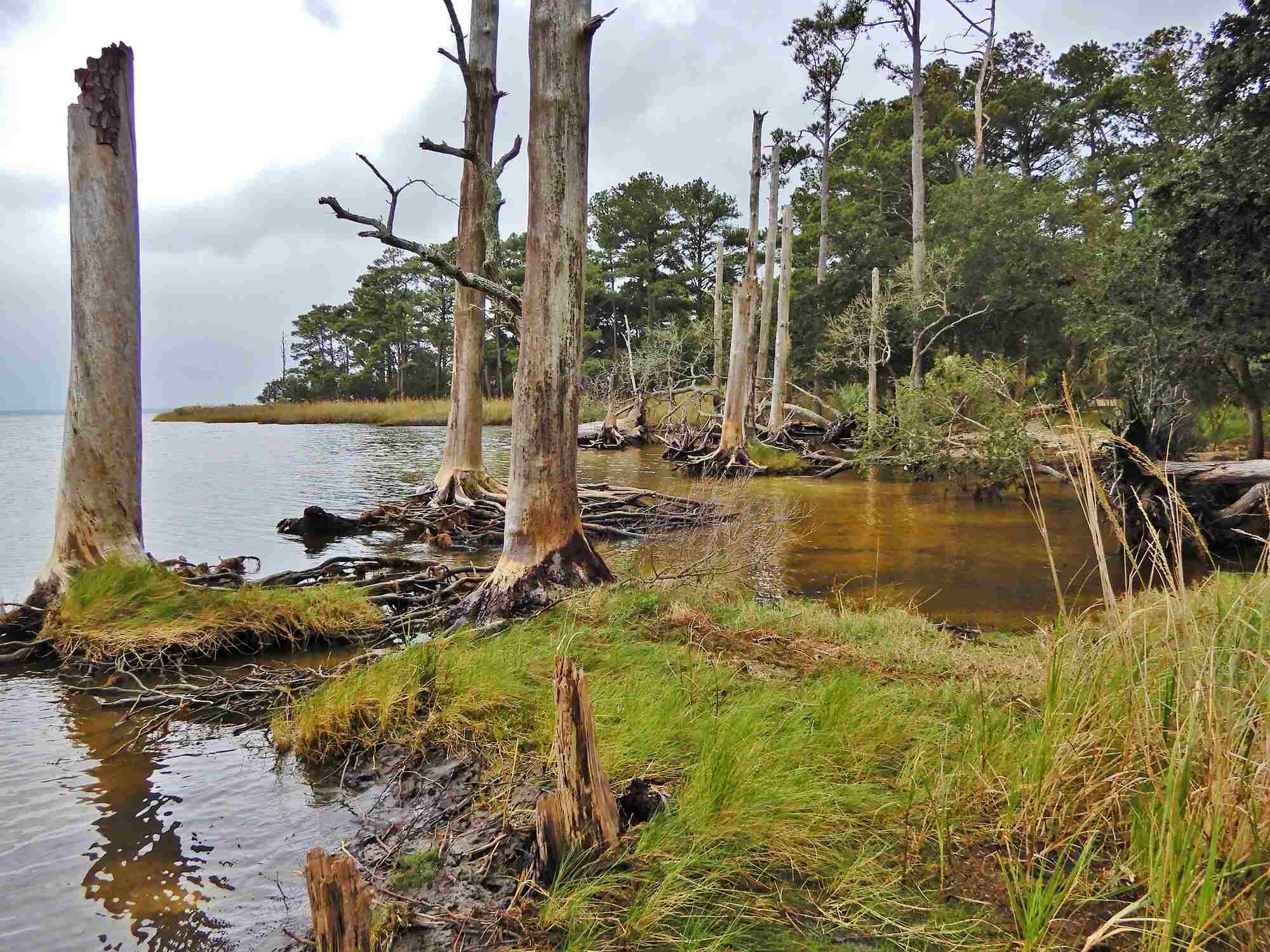Mysteries Behind Rhode Island’s Ghost Forest

Have you ever heard of the Ghost Forest in Rhode Island? This eerie yet fascinating place is a hidden gem waiting to be explored. Located in the Ninigret National Wildlife Refuge, the Ghost Forest is a stark reminder of nature's power and beauty. Dead trees stand tall, their skeletal remains creating a hauntingly beautiful landscape. These trees were killed by rising sea levels and saltwater intrusion, leaving behind a ghostly forest that tells a story of environmental change. Whether you're a nature lover, a history buff, or just looking for a unique adventure, the Ghost Forest offers a glimpse into the past and a lesson for the future.
Mysteries Behind Rhode Island's Ghost Forest
Rhode Island, known for its stunning coastlines and rich history, hides a lesser-known secret: the eerie Ghost Forest. This natural phenomenon has intrigued scientists, historians, and adventurers alike. Let's uncover the mysteries behind this hauntingly beautiful landscape.
What is a Ghost Forest?
A Ghost Forest is an area where trees have died but remain standing, creating a spectral appearance. These forests often result from environmental changes such as rising sea levels, storms, or human activity. Rhode Island's Ghost Forest is a prime example of nature's resilience and transformation.
The Origins of Rhode Island's Ghost Forest
Understanding the origins of Rhode Island's Ghost Forest requires delving into its history and environmental changes. Here are some key factors that contributed to its formation:
Rising Sea Levels: Over the past century, sea levels have risen significantly, causing saltwater to encroach on freshwater ecosystems. This intrusion has led to the death of many trees, leaving behind a ghostly forest.
Storm Surges: Powerful storms and hurricanes have battered Rhode Island's coastline, uprooting trees and altering the landscape. These events have left behind standing dead trees, contributing to the Ghost Forest's eerie appearance.
Human Impact: Coastal development and land use changes have also played a role in the formation of the Ghost Forest. Deforestation and construction have disrupted natural habitats, leading to the death of trees in certain areas.
Exploring the Ghost Forest
Visiting Rhode Island's Ghost Forest offers a unique and hauntingly beautiful experience. Here are some notable spots to explore:
Ninigret National Wildlife Refuge: This refuge is home to a section of the Ghost Forest. Visitors can hike through the trails and witness the stark contrast between the living and dead trees.
Sachuest Point National Wildlife Refuge: Another great location to see the Ghost Forest, Sachuest Point offers stunning coastal views and a chance to observe the effects of environmental changes on the landscape.
Charlestown Breachway: This area provides a glimpse into the Ghost Forest's origins, with saltwater marshes and standing dead trees creating a hauntingly beautiful scene.
Trustom Pond National Wildlife Refuge: Known for its diverse wildlife and serene landscapes, Trustom Pond also features sections of the Ghost Forest. It's a perfect spot for birdwatching and photography.
The Ecological Impact of the Ghost Forest
The Ghost Forest is not just a visual spectacle; it also has significant ecological implications. Here are some ways it impacts the environment:
Habitat Loss: The death of trees in the Ghost Forest has led to the loss of habitats for various species, affecting biodiversity in the area.
Soil Erosion: Without the roots of living trees to hold the soil in place, erosion becomes a significant issue, leading to further environmental degradation.
Carbon Storage: Dead trees in the Ghost Forest no longer absorb carbon dioxide, impacting the region's carbon storage capacity and contributing to climate change.
Preserving the Ghost Forest
Efforts to preserve Rhode Island's Ghost Forest are crucial for maintaining its ecological balance and historical significance. Here are some initiatives aimed at conservation:
Restoration Projects: Various organizations are working on restoration projects to replant native vegetation and stabilize the soil in affected areas.
Public Awareness: Educating the public about the importance of the Ghost Forest and its ecological impact helps garner support for conservation efforts.
Research and Monitoring: Ongoing research and monitoring of the Ghost Forest provide valuable data to inform conservation strategies and track environmental changes.
Rhode Island's Ghost Forest stands as a testament to nature's power and resilience. Exploring this hauntingly beautiful landscape offers a glimpse into the past and a reminder of the importance of preserving our natural world.
Discovering Rhode Island's Ghost Forest
Rhode Island's Ghost Forest offers a unique glimpse into the past. These eerie landscapes, with their dead trees standing stark against the sky, tell stories of environmental changes and rising sea levels. Visiting these sites, like the one in Ninigret National Wildlife Refuge, provides a hauntingly beautiful experience. It's a reminder of nature's power and the impact of climate change.
Exploring these forests can be both educational and awe-inspiring. You get to see firsthand how the environment adapts and changes over time. Plus, it's a great way to connect with nature and appreciate its beauty and resilience.
Next time you're in Rhode Island, make sure to visit a Ghost Forest. It's a unique experience that combines history, science, and natural beauty. You'll leave with a deeper understanding of our planet and its ever-changing landscapes.

